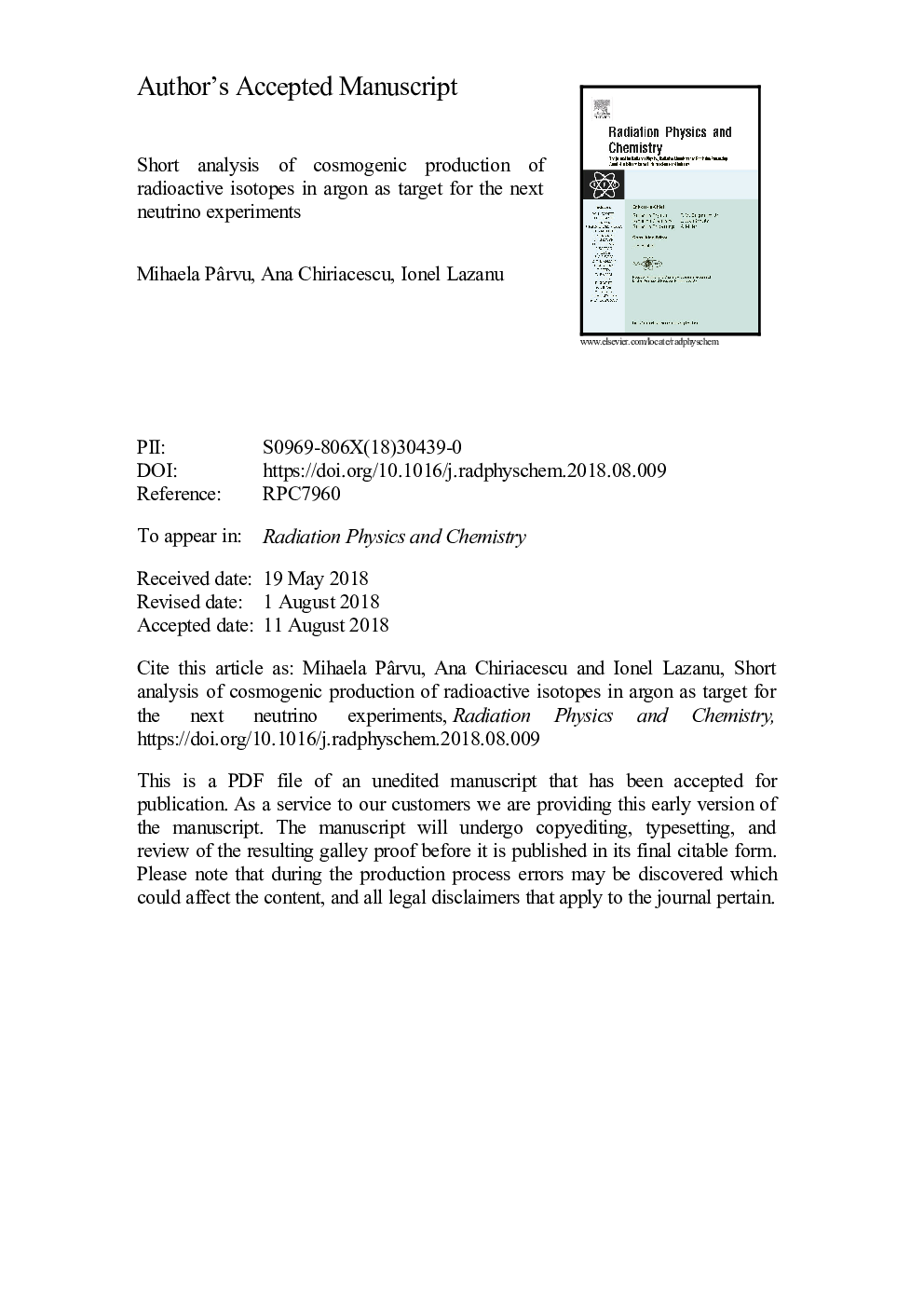| Article ID | Journal | Published Year | Pages | File Type |
|---|---|---|---|---|
| 9953963 | Radiation Physics and Chemistry | 2018 | 18 Pages |
Abstract
The reduction of the radioactive background, the knowledge of its sources and mechanisms of its production, as well as the characteristics of its signals represent important steps for the next generation neutrino experiments, because thus the sensitivity of huge detectors is increased, and also the capability to discriminate between various particles interacting with the detector. Liquid - gaseous argon as LAr TPC technology represents a major option as target and an excellent tracking - calorimeter detector. In this class of detectors, both the scintillation light emitted and the charges produced by ionization are used to detect and identify the characteristics of the primary and secondary particles. Cosmogenic sources of background or activation of different materials become more important in this context. The radioactivity induced by cosmogenic reactions in Ar is discussed by considering muon capture and reactions induced by neutrons as sources of background. The ratio between the vertical and horizontal components of the very low energy terrestrial muons at ground level is measured in a particular location and the total flux of the low energy component of muon spectra is estimated using the EXPACS code, developed in the frame of the PARMA model. For neutron interactions, only the simulated cross sections for possible production of radioactive isotopes of argon are considered using the TALYS and EMPIRE software codes, highlighting the similarities and differences between the results of these nuclear codes and the level of concordance with the few existing experimental data. A short discussion about the scintillation processes in the argon bulk and the possible effects due of the presence of radioactive isotopes is presented.
Related Topics
Physical Sciences and Engineering
Physics and Astronomy
Radiation
Authors
Mihaela Pârvu, Ana Chiriacescu, Ionel Lazanu,
